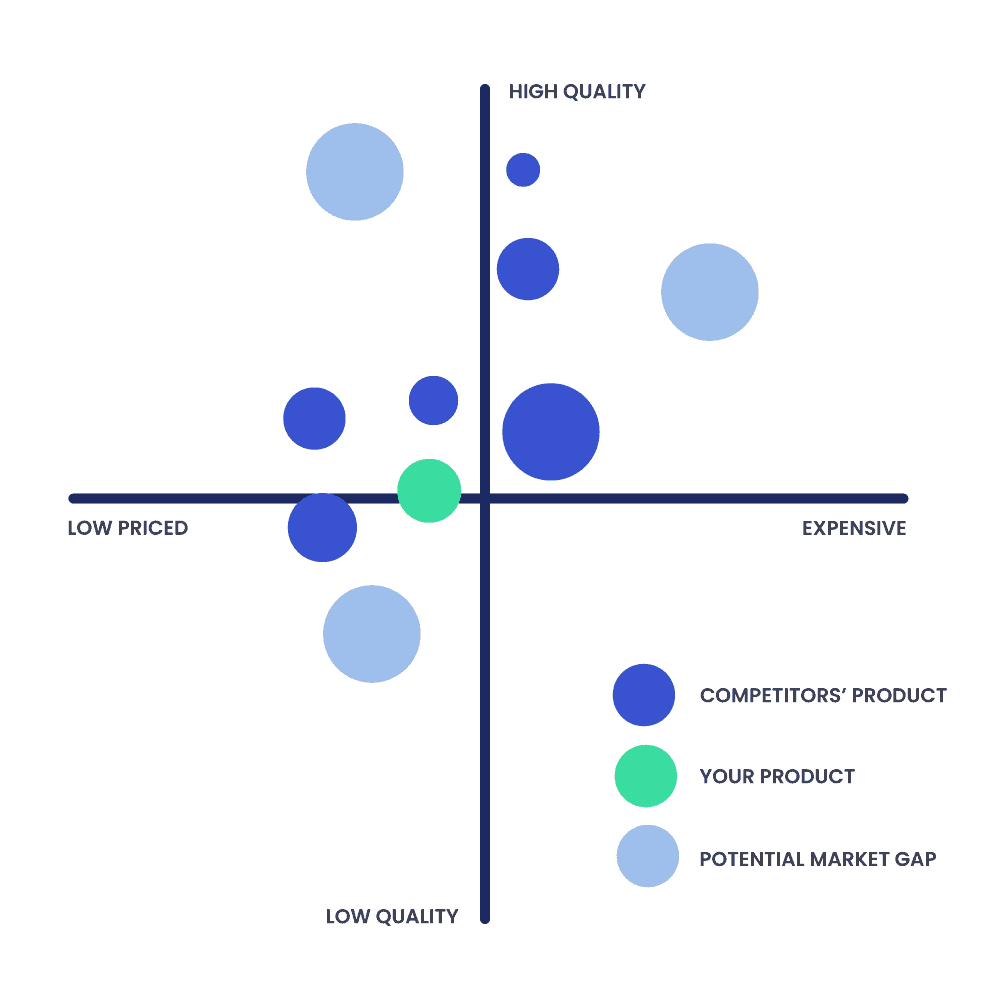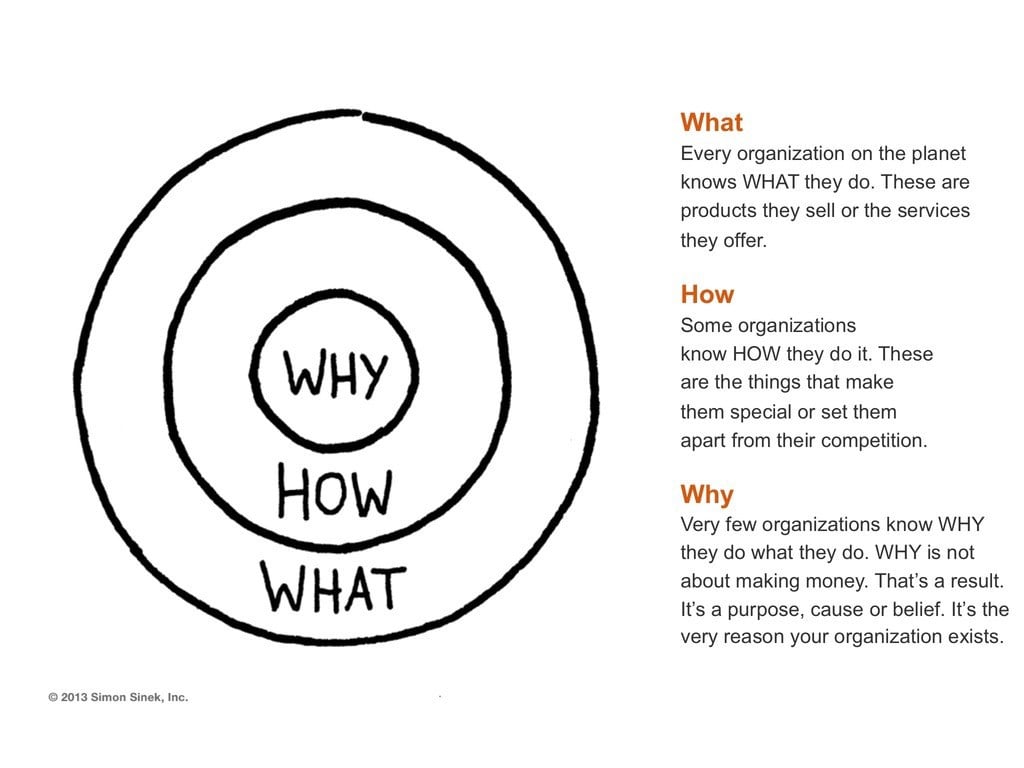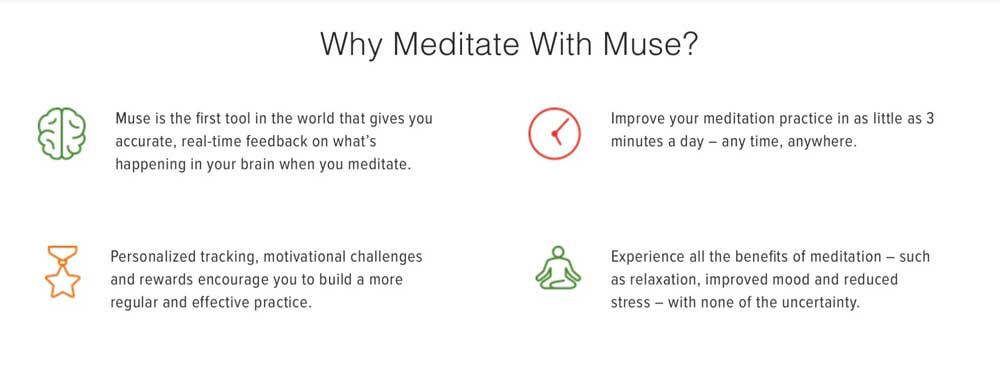How to Write an Irresistible Brand Positioning Statement
Are you ready to unlock the secrets behind crafting a brand positioning statement to leave your competition in the dust? Well, you've come to the right place because, in this article, we're diving headfirst into the captivating world of irresistible brand positioning!
In today's hyper-competitive market, building a solid brand identity is not just important—it's essential. A brand positioning statement is the powerful compass that guides every decision you make, from product development to marketing strategies. But here's the kicker: not all brand positioning statements are equal.
In an era where consumers are bombarded with endless choices, a carefully tailored positioning statement can be the game-changer that sets your brand apart and forges an unbreakable bond with your audience.
You might wonder, “What makes a brand positioning statement irresistible?” Well, fret not! Throughout this article, we'll walk you through the step-by-step process of creating a magnetic brand positioning statement that resonates with your target audience and leaves a lasting impression.
Whether you're a seasoned marketing pro looking to fine-tune your brand strategy or a budding entrepreneur ready to take the plunge, our practical tips and insider insights will equip you with the tools to captivate hearts, minds, and—ultimately—wallets!
So, gear up for an exciting journey into the art and science of crafting an irresistible brand positioning statement. Let's unleash your brand's full potential and watch it soar to new heights! Are you ready? Let's get started!
Table of Contents
Understanding Brand Positioning

Every successful brand's core lies in a clear and compelling positioning statement. Brand positioning refers to the unique space a brand occupies in the minds of its target customers, differentiating it from competitors. It is the essence of what the brand stands for and how it is perceived in the market. A robust brand positioning strategy enables businesses to establish a solid foundation for all their marketing efforts and messaging, ensuring consistency and coherence across various touchpoints.
Key Points:
- Brand positioning defines the unique value proposition of a brand.
- It distinguishes a brand from its competitors in the minds of consumers.
- A strong brand positioning strategy enhances marketing effectiveness and consistency.
The Elements of a Brand Positioning Statement
Crafting a compelling brand positioning statement requires careful consideration of several vital elements. These elements work together to create a cohesive, impactful message that resonates with the target audience.
Target Audience

At the core of crafting a compelling brand positioning statement lies in identifying the target audience. This process is the cornerstone of any successful marketing strategy, laying the groundwork for a brand to resonate effectively with its ideal customers. To achieve this, a comprehensive understanding of the target audience's demographics, psychographics, and pain points is essential, enabling the brand to tailor its message to address its unique needs, desires, and aspirations.
The first step in this journey is delving into the target audience's demographics. This involves gathering crucial data such as age, gender, income level, education, and geographical location. By understanding the demographic makeup of their ideal customers, brands can create content, products, and services that are more likely to align with their preferences and lifestyles.
However, demographics alone do not paint a complete picture of the target audience. Equally important are the psychographics, which delves into potential customers' mindsets, attitudes, values, and interests. This understanding goes beyond the surface-level facts and delves into the psychological aspects that drive consumer behaviour. By comprehending the psychographic traits of the target audience, brands can establish an emotional connection and build a deeper relationship with their customers.
Furthermore, identifying the target audience's pain points is indispensable in creating a brand positioning statement that genuinely resonates. Pain points refer to individuals' specific challenges, problems, or unmet needs. By empathising with these struggles, a brand can position itself as a solution provider, demonstrating how its products or services directly address and alleviate these pain points. In doing so, the brand communicates its value proposition and establishes itself as a trustworthy and indispensable ally in the lives of its customers.
Expanding on pain points, a brand may discover latent or unexpressed desires and aspirations among its target audience. Recognising these aspirations enables the brand to appeal to the customers' dreams and aspirations, allowing them to see the brand as a means of achieving their goals and fulfilling their deepest desires.
To gather the necessary data and insights, brands often employ market research techniques, such as surveys, focus groups, customer interviews, and data analytics. These methodologies provide invaluable information that empowers the brand to refine its messaging, enhance its offerings, and adapt its overall approach to better align with the target audience's ever-evolving needs.
Statistical Insight: Research shows that 75% of consumers find a personalised brand experience more appealing. (Source: RRD)
Brand Promise

The brand promise is the cornerstone of a company's commitment to its customers, encompassing the fundamental assurances and values it pledges to deliver. It is a powerful statement that defines the brand's identity and sets the expectations for its products, services, and overall customer experience. Crafting a compelling brand promise requires an artful combination of clarity, brevity, and uniqueness, allowing it to resonate deeply with the target audience while leaving a lasting impression.
At its core, a well-crafted brand promise must distil the brand's essence into a few carefully chosen words or a short sentence. It should be easily understood and memorable, acting as a guiding beacon that aligns the entire organisation toward a common purpose. This purpose should revolve around the central idea of delivering exceptional benefits and solutions that genuinely address the needs and desires of the customers.
To create an impactful brand promise, businesses must conduct thorough research and analyse their target market, understanding their potential customer's pain points, aspirations, and preferences. By gaining insights into what sets their offerings apart, brands can emphasise their unique selling points in their promises.
A successful brand promise resonates with consumers' emotions, forging a deep connection beyond product features or services. It should evoke positive feelings and convey a sense of trust, reliability, and authenticity. When customers feel that a brand genuinely cares about their well-being and success, they are more likely to develop brand loyalty and become advocates for the company.
However, creating a compelling brand promise is a collaborative endeavour. As the market evolves, customer expectations change and new challenges emerge, brands must continuously review and refine their pledge to ensure relevance and effectiveness. An agile and adaptable brand promise enables the company to stay ahead in a dynamic business landscape and maintain its competitive edge.
Ultimately, a brand promise that consistently delivers on its commitments fosters brand credibility and encourages customer loyalty. When customers experience the promised benefits and solutions reinforces their belief in the brand's authenticity and strengthens their emotional connection. Positive word-of-mouth and customer testimonials further solidify the brand's reputation and attract new customers, facilitating sustainable growth and success.
Brand Essence

The brand essence lies at the very heart of a brand, encapsulating its core identity and unique attributes. It serves as the distilled essence of what the brand stands for, breathing life into its personality, values, and character. In a concise yet assertive manner, the brand essence crafts a narrative that resonates with consumers and differentiates the brand from its competitors.
At the heart of crafting a brand essence is the endeavour to evoke emotions and forge meaningful connections with the target audience. A well-crafted brand essence sparks recognition and recall, leaving an indelible mark on the minds of consumers. It is a guiding light for every facet of the brand, influencing marketing campaigns, product development, customer interactions, and even the company's culture and internal communications.
To develop an impactful brand essence, a brand must first embark on a journey of self-discovery. This involves delving deep into its history, values, and purpose. By examining its roots and understanding its mission, a brand can uncover the authentic qualities that define its identity. These insights form the building blocks of the brand essence, offering a cohesive and compelling representation of what the brand aspires to be.
Once the foundational elements are identified, the brand essence can be distilled into a concise and memorable statement or tagline. This concise expression must resonate with the target audience, communicating the brand's promises and personality in just a few carefully chosen words. Such a statement requires a masterful use of language and a profound understanding of the brand's target market.
Beyond shaping external perceptions, the brand essence also plays a pivotal role within the organisation. It unites employees with a common purpose, fostering a sense of pride and ownership. When the internal team fully embraces and embodies the brand essence, it leads to authentic customer interactions, making the brand experience consistent, genuine, and memorable.
The brand essence is not a static concept; it evolves with the brand as it grows and adapts to changing market dynamics. However, it remains grounded in the brand's core values and enduring principles. When executed effectively, the brand essence becomes timeless, weaving its way into the collective consciousness of consumers, transcending fads and fleeting trends.
Competitive Differentiation

Effectively positioning a brand is the key to standing out and capturing consumers' attention. Highlighting what sets your brand apart from its competitors is a critical aspect of this process, as it helps establish a strong identity and resonates with your target audience. To achieve this, brands can leverage various factors that make them distinctive, such as product features, quality, pricing, and a unique brand story.
One of the fundamental elements of setting a brand apart is its product features. Innovation and creativity in product design can create a competitive advantage by offering customers something they can't find elsewhere. Whether it's groundbreaking technology, ergonomic design, or a combination of unique functionalities, emphasising these features in marketing messages can help the brand claim a unique position in the market.
Quality is another vital differentiator that can significantly impact a brand's positioning. Brands that invest in maintaining high standards in their products or services gain trust and loyalty from consumers. Superior quality enhances the overall user experience and establishes the brand as a reliable choice among consumers seeking long-lasting and satisfying solutions. Through testimonials, reviews, and certifications, a brand can showcase its commitment to quality and build a distinct reputation.
Pricing is a powerful tool in brand positioning as well. A brand can position itself as a premium, luxury option with higher pricing, targeting customers who prioritise exclusivity and status. On the other hand, a brand can opt for a competitive pricing strategy to attract a wider audience and compete in price-sensitive markets. The key is to align pricing with the brand's value proposition and target audience, ensuring that customers perceive the brand as providing fair value for their investment.
However, in a market flooded with similar products and services, storytelling emerges as a potent strategy for differentiation. A compelling brand story evokes emotions and connects with consumers more deeply. It can be rooted in the brand's history, its founders' journey, or its mission and values. When told effectively through various channels, such as advertising, social media, or content marketing, a unique brand story creates a sense of authenticity and fosters an emotional bond between the brand and its customers.
Beyond these primary factors, sustainability, corporate social responsibility, and exceptional customer service are increasingly important brand positioning elements. Customers today value brands that demonstrate a commitment to environmental and social causes. By incorporating sustainable practices and supporting meaningful initiatives, a brand can enhance its reputation and attract conscious consumers who align with these values.
Furthermore, outstanding customer service can set a brand apart in a crowded marketplace. Offering personalised assistance, quick problem resolution, and attentiveness to customer feedback can lead to a loyal customer base and positive word-of-mouth promotion.
Statistical Insight: 89% of consumers say they remain loyal to brands that share their values. (Source: Accenture)
Reason to Believe

At its core, a “reason to believe” is the backbone of a brand's promise. It provides tangible evidence or persuasive testimonials demonstrating the brand's ability to deliver on its stated value proposition. Without this crucial element, the positioning statement risks becoming hollow marketing jargon lacking substance or authenticity.
There are various ways to incorporate a “reason to believe” into a brand positioning statement. One powerful approach is highlighting specific product features, innovations, or proprietary technologies that set the brand apart. By showcasing tangible attributes, consumers can see firsthand why the brand's offerings are superior and how they cater to their needs better than competitors.
Additionally, social proof plays a significant role in building credibility. Brands can leverage customer testimonials, case studies, or endorsements from influential figures to bolster their positioning statement. When potential customers see that others have had positive experiences with the brand, they are more likely to trust and engage with it.
Furthermore, showcasing awards, certifications, or industry recognition can further solidify a brand's position as a leader or expert. Such accolades serve as external validation and reassure consumers that the brand is reliable and worthy of consideration.
Quantitative data and statistics are another compelling way to strengthen the “reason to believe.” Whether it's showcasing impressive sales figures, customer satisfaction rates, or market share, these concrete numbers provide tangible evidence of the brand's success and competence.
Moreover, a brand positioning statement should align with the brand's overall storytelling and communication strategy. When narratives across various touchpoints (e.g., website, social media, advertisements) reinforce the same message and “reason to believe,” it creates a consistent and coherent brand identity that resonates with consumers on a deeper level.
It is important to note that the “reason to believe” should be specific, relevant, and genuinely meaningful to the target audience. Blanket statements or vague claims can be met with scepticism and may not effectively build credibility. Therefore, conducting market research and understanding the target customers' needs, values, and pain points is essential to identify the most compelling “reason to believe.
The Process of Developing a Brand Positioning Statement
Creating a compelling brand positioning statement is not an arbitrary process; it requires research, analysis, and strategic thinking.
Market Research

Comprehensive market research is the cornerstone for achieving a well-defined and successful brand positioning strategy. By delving deep into the market dynamics, businesses gain crucial insights that shape their positioning in a way that resonates with the target audience and sets them apart from competitors. This multifaceted process encompasses a range of activities that help organisations develop a clear understanding of their market environment.
One of the primary aspects of market research is studying the industry landscape. This involves thoroughly analysing the sector in which the brand operates. Understanding the industry's current state, key players, and emerging trends empowers businesses to make informed decisions and anticipate potential challenges and opportunities. This macro-level understanding forms the basis for strategic planning.
Identifying competitors is another pivotal aspect of market research. Organisations need to know their direct and indirect competitors, their products or services, and how they position themselves in the market. This analysis enables brands to differentiate themselves effectively by capitalising on their unique selling points and addressing gaps in the market that competitors may have overlooked.
Analysing consumer preferences is a fundamental step in market research. Understanding the target audience's needs, desires, and pain points provides valuable insights into shaping the brand's identity and offerings. This includes gathering quantitative and qualitative data through surveys, interviews, and customer feedback, among other methods. By understanding consumer behaviour and preferences, brands can effectively tailor their messaging and product development to meet customer expectations.
Market trends play a vital role in shaping a brand's positioning strategy. Identifying and forecasting these trends allows businesses to align their products or services with the market's changing demands. Brands that are adaptable and responsive to market trends can gain a competitive advantage and maintain relevance in an ever-evolving landscape.
In addition to the core aspects mentioned above, market research also involves assessing the economic, political, and social factors that can impact a brand's positioning. Understanding the regulatory environment and cultural nuances can help avoid pitfalls and ensure that the brand's messaging aligns with the values and beliefs of its target audience.
Market research is not a one-time activity; it should be an ongoing process. Markets are dynamic and subject to constant change, driven by technological advancements, economic fluctuations, and shifts in consumer behaviour. Therefore, brands must continuously update their knowledge through market research to stay relevant and competitive in the long term.
SWOT Analysis
Conducting a comprehensive SWOT (Strengths, Weaknesses, Opportunities, Threats) analysis is a fundamental strategic exercise that empowers businesses to gain valuable insights into their brand's position within the market. This analytical framework delves into internal capabilities and external market challenges, thus enabling organisations to make informed decisions and effectively shape their strategies.
Strengths represent the intrinsic advantages and positive attributes possessed by the brand. These could encompass diverse factors, including a loyal customer base, a strong reputation for quality, efficient internal processes, robust financial health, proprietary technologies, and talented human resources. Identifying these strengths gives the organisation a solid foundation to build and leverage its competitive edge.
On the other hand, the analysis highlights weaknesses: internal limitations and areas that require improvement. These weaknesses may encompass inadequate resources, outdated technologies, a lack of skilled personnel, organisational inefficiencies, or subpar product offerings. Acknowledging and addressing these weaknesses is critical to enhancing performance and mitigating potential vulnerabilities.
Furthermore, the SWOT analysis examines external opportunities that may arise in the market. These opportunities can arise from various sources, such as emerging market trends, technological advancements, changing consumer preferences, or untapped market segments. By recognising and capitalising on these opportunities, businesses can expand their market presence and explore new avenues for growth.
Simultaneously, the analysis delves into potential threats and external factors that could negatively impact the brand's success. These threats may include intensifying competition, economic downturns, shifts in regulatory landscapes, or disruptive technologies. Awareness of these threats allows businesses to proactively devise contingency plans and strategies to safeguard their interests and maintain resilience in the face of challenges.
The SWOT analysis is not a one-time event but an ongoing process. As the market dynamics evolve, so do the internal and external factors influencing the business. Therefore, regular revisions and updates to the SWOT analysis become crucial for staying relevant and responsive to the changing business environment.
Identifying Unique Selling Proposition (USP)

In the competitive landscape of today's business world, identifying and harnessing a Unique Selling Proposition (USP) has become a vital strategy for success. By thoroughly analysing market research and conducting a comprehensive SWOT analysis, businesses can unearth distinctive features or benefits that set their brand apart, creating a compelling value proposition that resonates with the target audience.
Market research forms the foundation of any successful USP. It involves gathering valuable insights about consumer preferences, behaviour, and demands. By understanding the market's pulse, businesses can identify gaps and unmet needs, paving the way for the development of innovative products or services that cater to the specific desires of their customers. Market research also provides crucial information about competitors' strengths and weaknesses, enabling businesses to position themselves strategically and effectively communicate their differentiating factors.
The SWOT analysis further empowers businesses to delve deeper into their internal strengths and weaknesses, as well as external opportunities and threats. This introspective evaluation allows companies to capitalise on their strengths, shore up their weaknesses, seize opportunities, and proactively address potential threats. When combined with market research data, the SWOT analysis provides a holistic view of the business's position in the market and its differentiation potential.
Once the market research and SWOT analysis have been conducted, businesses can craft their USP more clearly and precisely. A compelling USP should encapsulate what makes the brand unique and valuable. It could revolve around a product feature no competitor offers, an unparalleled level of customer service, or a focus on sustainability that profoundly resonates with environmentally conscious consumers. The key is to create a USP that aligns harmoniously with the company's core values and communicates a clear and consistent message to the target audience.
A compelling USP sets the brand apart and establishes a strong emotional connection with the target audience. Customers are likelier to engage with a brand that speaks directly to their needs and aspirations. When a USP resonates with consumers personally, it fosters brand loyalty, encourages repeat business, and generates positive word-of-mouth referrals.
Moreover, a well-defined USP simplifies marketing efforts by guiding the creation of compelling campaigns and messaging that highlight the unique benefits customers can expect from choosing the brand. This cohesive approach strengthens brand recognition and fosters a consistent brand image across various marketing channels.
As the market evolves and consumer preferences change, businesses must periodically revisit and refine their USP. An evergreen USP remains relevant but may require adjustments to stay in tune with shifting market trends and customer expectations. Therefore, businesses should consistently monitor the competitive landscape, gather customer feedback, and update their market research to ensure their USP remains a compelling differentiator in the long run.
Crafting the Positioning Statement

Leveraging the invaluable insights gathered through meticulous market research and in-depth analysis, businesses have the opportunity to craft a brand positioning statement that goes beyond mere words. This carefully constructed statement becomes a beacon, guiding the company towards its essence and purpose in the competitive landscape.
A brand positioning statement is not just a collection of buzzwords or a hastily put-together phrase; it is the foundation of the entire brand strategy. It is a succinct articulation of the brand's identity, encapsulating the values, personality, and aspirations that define it. Distilling the brand's essence into a few well-chosen words becomes a powerful tool to communicate its unique value proposition to the target audience.
Consumers are inundated with endless options and overwhelming marketing messages in a world teeming with choices. A finely crafted brand positioning statement shines like a guiding star in this crowded marketplace. It speaks directly to the heart and minds of the intended customers, forging an emotional connection that fosters loyalty and advocacy. When done right, this statement resonates deeply with the target audience, instilling a sense of affinity and understanding. It makes them feel the brand understands their needs, desires, and challenges.
Moreover, a well-crafted brand positioning statement is a differentiator, setting the brand apart from its competitors. It carves out a distinct and unmistakable identity, showcasing what makes the brand exceptional and worthy of consideration. By highlighting its unique selling points, a brand can confidently assert its superiority over others in the industry, solidifying its position as a market leader.
To create such a compelling brand positioning statement, businesses must invest time and effort into understanding their market, customers, and competition. Robust market research is essential to comprehensively understand industry trends, customer preferences, pain points, and unmet needs. Analysing customer feedback, conducting surveys, and studying competitor strategies provide invaluable data for formulating a distinctive and credible positioning.
Additionally, aligning the brand's values and mission with the desires and aspirations of the target audience helps create an authentic and trustworthy image. It is crucial to remain genuine and transparent throughout the process, avoiding the temptation of claiming false attributes or misleading promises. Honesty and integrity resonate profoundly with customers, fostering long-lasting relationships built on mutual respect and trust.
Examples of Effective Brand Positioning Statements

To better understand the impact of a well-crafted brand positioning statement, let's explore a few examples of successful brands and their positioning strategies.
1. Volvo
Positioning Statement: “For upscale American families, Volvo is the family automobile that offers maximum safety.”
Rationale: Volvo's brand positioning focuses on safety, appealing to families who prioritise the well-being of their loved ones. This positioning has allowed Volvo to dominate the premium family car manufacturer market.
2. Nike
Positioning Statement: “For athletes and fitness enthusiasts, Nike is the innovative performance athletic brand that inspires peak performance.”
Rationale: Nike's brand positioning revolves around inspiration and peak performance, resonating with athletes and fitness enthusiasts worldwide. Their “Just Do It” campaign exemplifies this positioning.
Implementing Brand Positioning Across Channels
A well-crafted brand positioning statement becomes the backbone of a brand's marketing strategy, informing messaging across various channels.
Brand Messaging
Consistent and compelling brand messaging is essential for creating a solid brand identity. From website copy to social media posts, all communications should reflect the brand positioning.
Advertising and Marketing Campaigns
Brand positioning shapes the direction of advertising and marketing campaigns. It helps select the proper channels, tone, and imagery to connect with the target audience effectively.
Customer Experience
Brand positioning should be reflected in the overall customer experience. Every touchpoint should reinforce the brand's unique value proposition, from product design to customer service.
Monitoring and Adjusting Brand Positioning
Brand positioning is not static; it evolves with market dynamics and changing consumer preferences.
Performance Metrics
Monitoring performance metrics, such as brand awareness, customer loyalty, and market share, helps assess the effectiveness of the brand positioning strategy.
Competitive Analysis
Continuously analysing competitor positioning helps identify new opportunities or threats in the market, allowing businesses to adjust their positioning strategy accordingly.
Conclusion
A compelling brand positioning statement is a powerful tool that can elevate a brand from obscurity to prominence. A brand can discover a special place in consumers' hearts and minds by identifying its unique value proposition, appealing to the target audience, and differentiating itself from competitors. Brand positioning is not a one-time effort but an ongoing process of refinement and adaptation. With careful research, strategic thinking, and creative execution, businesses can craft an irresistible brand positioning statement that resonates with consumers and fuels long-term success.
